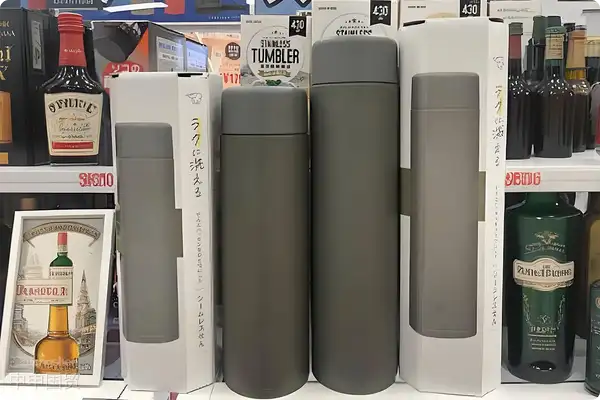- Shanghai Zhongshen International Trade Co., Ltd. - Two decades of trade agency expertise.
- Service Hotline: 139 1787 2118

Contents
ToggleThe Ins and Outs of Thermal Cup Imports: Professional Agency Insights
As an old hand with 20 years of experienceforeign trade"Old Driver," today I'm going to talk to you about the ins and outs of imported stainless steel insulated cups. Don't underestimate this small cup—from overseas procurement to domestic shelving, it has to go through numerous hurdles. I recently helped a client handle a batch of insulated cups imported from Japan, so I thought I'd share some practical experience with you.
1. Pre-import "physical examination report" is indispensable.
Many clients ask during their first import: "Isn't it just a cup? Can't we just ship it directly?" In fact, customs regulations on food-contact products are particularly strict. We need to take care of three major tasks first:
- HS Code Positioning: Thermal cups are generally classified under HS code 73.23, but specifics depend on material and function. For example, electrically heated cups fall under 85.16, with nearly 10% tariff difference.
- Required documents preparation: It is recommended to verify through the following methods:, quality inspection report, and food contact material compliance declaration (GB 4806.9 standard) are the three essentials
- Special regulatory requirements: Smart thermal cups with lithium batteries require3Ccertification, and wooden packaging needs fumigation certificates
Last month, a clients shipment was detained by customs due to missing material testing, requiring two extra weeks for supplementary testing. As the old saying goes:"Sharpening the axe does not delay the cutting of firewood."!
II. The "Invisible Traps" During Transportation
Pay attention to these details when booking shipping:
- Maritime TransportationRecommend using temperature-controlled containers to prevent seal deformation from extreme temperatures
- Air TransportationCups must be completely emptied before shipping - last year a shipment was rejected by airlines due to residual liquid
- Packaging must pass 1.8-meter drop tests - weve encountered claims for deformed inner containers due to substandard packaging
Special reminder:For thermal cups imported from Japan, radiation certificates require special attention, a point many agents overlook.
III. "Customs Clearance Cheat Sheet"
At customs clearance stage, these key points are crucial:
- Customs declaration form completion: The material composition must be specified precisely to grades such as "06Cr19Ni10," and cannot be simply written as "stainless steel."
- CIQ Inspection: Customs will randomly sample and send products to laboratories for testing the migration of heavy metals such as manganese and chromium
- Tax planning: Thermos cups originating from Japan under RCEP can enjoy preferential tariff rates, but must submit a declaration of origin
A practical tip: Prepare in advanceBilingual material specifications in Chinese and Englishcan significantly improve customs clearance efficiency. One of our clientsCross-border E-commercereduced clearance time from 5 days to 8 hours through advance classification.
IV. The "Pitfalls" We've Stumbled Upon Over the Years
Sharing some real cases:
- A German brand suffered heavy losses due to entire batch rejection because the silicone ring on the cup lid didnt comply with Chinas food safety standards
- Cartoon thermos cups imported from South Korea were detained by customs due to copyright issues with the patterns
- A batch of British goods faced rectification for failing to include the warning label "Not for carbonated beverages."
So now we require clients to providecomplete product label samplesfor pre-review - these lessons shouldnt be learned in vain!
Professional advice for buyers
Combining customs consumer alerts, here are practical suggestions for end buyers:
- When purchasing: Look for GB 4806.9 standard marking, preferably choose 316 medical-grade stainless steel for the inner liner
- When using: Perform a deep clean with white vinegar + baking soda before first use of new cups
- For maintenance: Replace the sealing ring every 3 months - our represented Swiss brand provides free replacement parts service
Remember thisThe "Three No's" Principle: Dont hold carbonated drinks, dont store overnight dairy products, dont scrub with steel wool.
The value of agency services
Many customers ask: "Can't I import on my own?" Of course you can, but a professional agent can assist you by:
- Anticipate risks: For example, knowing the EUs latest revised nickel release limit standard
- Reduce costs: Legally save tariffs through classification techniques - we once helped a client save 17% in taxes
- Emergency handling: When inspection anomalies occur, there are registered laboratories available for expedited testing
Recently, a client simultaneously imported thermos cups and coffee cups, and we passedCombined classificationThe solution directly saved 32,000 in tariffs. This is like seeing a specialist doctor for medical issues - professional matters should be left to professionals!
Finally, heres a saying for everyone:"Imports are no trivial matter; details determine success or failure."Feel free to reach out to this "veteran in foreign trade" anytime if you have any questions about importing thermos cups~
Related Recommendations
? 2025. All Rights Reserved. Shanghai ICP No. 2023007705-2  PSB Record: Shanghai No.31011502009912
PSB Record: Shanghai No.31011502009912










